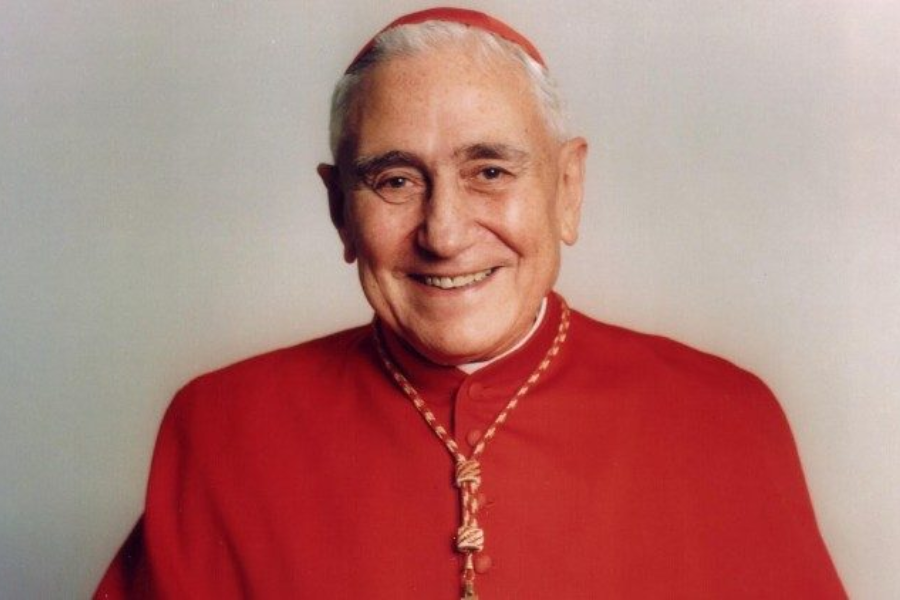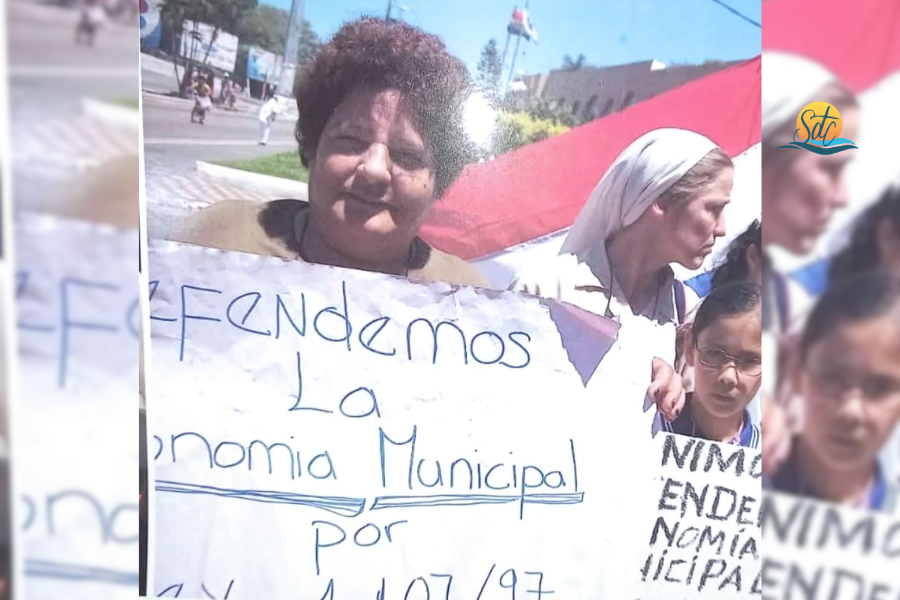He was born on 3 December 1920 in Nueve de Julio, Argentina, the 22nd son of Giuseppe Pironio and Enrica Buttazzoni, Friulian emigrants.
His father was originally from Percoto, a village in the municipality of Pavia di Udine; his mother came from Camino di Buttrio, also in the province of Butrio.

Ordained a priest on 5 December 1943, Pironio was among the participants at the Second Vatican Council as an ‘expert’ and also devoted himself to teaching for a long time. He was elected auxiliary bishop of La Plata on 24 March 1964. On 19 April 1972 he was appointed Bishop of Mar del Plata. From 1968 to 1975 he was first Secretary General and then President of CELAM (Latin American Episcopal Council).
In 1974 he was invited by Paul VI to preach spiritual exercises to the Roman Curia and on 20 September 1975 he was called back to Rome by Paul VI first as pro-prefect and then prefect of the Congregation for Religious and Secular Institutes. In this task, he committed himself with all his strength to encourage and support the conciliar renewal of religious.
On 24 May 1976 he was created cardinal: eight years later John Paul II appointed him president of the Pontifical Council for the Laity. And it was in this latter capacity that he was responsible for organising the World Youth Days.
This is how he is remembered
Pironio’s personal secretary, Bishop Fernand Vérgez Alzaga, still says of him today:
“The cardinal was deeply human and all of God. No one approached the cardinal without feeling deeply loved”.
Those who also knew him during his years of service in the Roman Curia remember his humility and the profound sense of friendship that surrounded him: during his travels around the Vatican, in fact, he would shake hands with everyone and make gestures of welcome and help to the many poor people he met. It is precisely his particular ‘option for the poor’ that is one of his key distinguishing features.
“Cardinal Pironio’s faith was severely tested in the crucible of suffering. Mined in body by a serious illness, he was able to accept with resignation and patience the heavy trial that was required of him. Of this arduous experience he left written: I thank the Lord for the privilege of the cross. I am overjoyed to have suffered so much. I only regret that I did not suffer well and that I did not always savour my cross in silence. I wish that, at least now, my cross will begin to be bright and fruitful”.
His spiritual testament
In his spiritual testament he wrote, among other things:
“I give thanks to the Lord for my ministry of service in the episcopate. How good the Lord has been to me! I have wanted to be a father, brother and friend to priests, to men and women religious, to all God’s people. I wanted to be simply the presence of ‘Christ, the hope of glory”.
The last sentences of his testament are:
“I want to depart to the Father with a serene, grateful and happy heart. Fiat and Magnificat. I go to the Father. I bless everyone with my affection as a father, brother and friend”.
Hope and joy were his characteristic traits, linked to his Marian spirituality, typical of the Magnificat. He was a good shepherd in complex circumstances: paternal, mild, welcoming, firm but understanding. In his work he gave importance to personal relationships. For him, human relationships were pre-eminent: building friendships and making others grow through encounters. This pedagogy, for his detractors, was a form of weakness, in reality it was his strength. As a man of peace, he suffered when faced with conflict. He was able to make clear decisions, which he pursued with commitment. He nurtured a special love for poverty and lived in detachment from material goods and wealth, always maintaining the exercise of the virtue of humility. His mediation skills, the fruit of reliance on Providence and a life of imitatio Christi, proved invaluable during the work of the Medellin Conference. He accepted humiliations and his final illness with fortitude (cf. Dicastery for the Causes of Saints).
Card. Pironio and the Religious Life
Cardinal Pironio was Prefect of the Sacred Congregation for Religious and Secular Institutes from 1974 to 1984. Although he was not professed in any religious institute, as he belonged to the secular clergy, he assumed his ecclesial commitment with such a spirit that he was considered by consecrated men and women as a true religious among religious, sharing with them the most intimate part of their spirituality and the most ardent part of their apostolate. There is no known case in which the appointment to the presidency of a Roman dicastery produced as much enthusiasm as that of Pironio. In those years, there was no major specialist publication that did not echo the enthusiasm with which his appointment as Prefect of the Congregation for Religious and Secular Institutes was greeted.
The approval of our current Rule of Life
It was Edward Pironio, on 11 April 1981, the 182nd anniversary of the foundation of the Institute, who approved the definitive text of our Rule of Life: “To God all glory!
“The years that followed the Council were marked by a persevering effort on the part of the Sisters of Charity to enter into the renewal process proposed by the Council and continually urged and accompanied by Card. Pironio. The emphasis placed on charisma led to profound questions. Fifty years after the beginning of the Second Vatican Council, we can say that religious life feels once again strongly challenged to renew itself… It is a journey that continues” (Mother M. A. Henriot).







